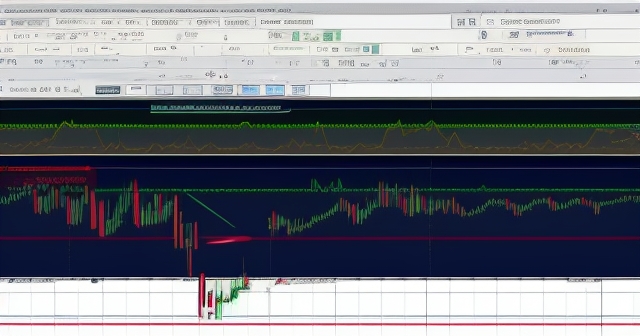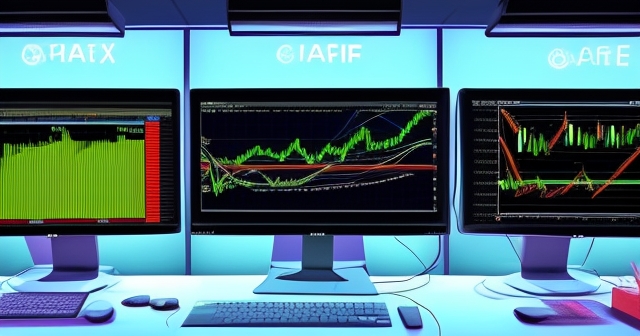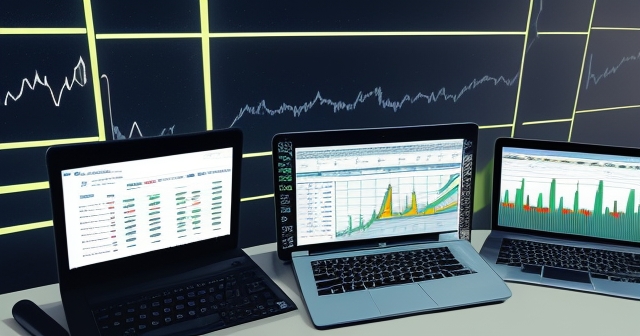Mastering the Art of Direction: Going Long and Going Short in Forex Trading
Welcome to a foundational lesson in financial markets: understanding directional trading. In the world of investment and trading, you’re not limited to simply buying an asset and hoping its price goes up. The sophisticated trader possesses the ability to potentially profit whether the market is rising or falling. This fundamental concept is embodied in the two primary positions you can take: going long and going short.
These terms define your stance on the market’s direction and are absolutely crucial for anyone looking to navigate the complexities of the Forex market, stock trading, commodity futures, or virtually any other financial instrument. Think of it as having two gears – one for moving forward (expecting prices to climb) and one for moving in reverse (expecting prices to decline). Mastering both is essential for versatile trading.
Throughout this guide, we will delve deeply into what long and short positions mean, how they function specifically within the Forex market, the mechanics of executing them, the risks involved, and the indispensable tools needed to manage those risks effectively. By the end, you should have a robust understanding that empowers you to think directionally in your trading decisions.
Here are some key points to remember:
- The ability to go long and short allows for profit in both rising and falling markets.
- Understanding market direction is crucial for trading success.
- Risk management is key when taking long or short positions.
| Concept | Long Position | Short Position |
|---|---|---|
| Market Direction | Bullish | Bearish |
| Objective | Profit from price increase | Profit from price decrease |
| Risks | Limited to investment | Potentially unlimited |
Going Long: Riding the Bullish Momentum
Let’s start with the more intuitive position for most people: going long. When you take a long position on an asset, whether it’s a stock, a commodity future, or a currency pair, you are fundamentally buying it with the expectation that its price will increase over time. This aligns with a bullish market outlook – you believe the market is heading upwards.
The mechanism is straightforward: you buy the asset at a certain price, and if the price rises, you can then sell it later at a higher price, locking in a profit. The difference between your buying price and your selling price, multiplied by the size of your position, determines your gain. Conversely, if the price falls after you go long, and you decide to sell, you will incur a loss.

Consider a simple example outside of Forex for a moment: buying shares of a company. You purchase 100 shares at $50 each. If the price goes up to $55, you sell the shares. Your profit is ($55 – $50) * 100 shares = $500 (minus any transaction costs). This is the classic “buy low, sell high” approach.
In essence, a long position is the traditional way people think about investing – acquiring an asset with the hope and expectation of appreciation. It’s about aligning yourself with positive price momentum.
Going Short: Navigating the Bearish Waters
Now, let’s explore the less conventional, but equally powerful, position: going short. When you take a short position on an asset, you are doing the opposite of going long. You are taking a position with the expectation that the asset’s price will decrease. This aligns with a bearish market outlook – you believe the market is heading downwards.
How do you profit from a falling price? This is where the concept gets a bit more intricate than simply buying. When you go short on an asset (like a stock), you typically borrow that asset from your broker and sell it immediately at the current market price. Your goal is then to buy the asset back later at a lower price and return the borrowed asset to the broker. The difference between the price you sold it for (when you opened the position) and the price you bought it back for (when you closed the position) is your profit, minus any borrowing fees or costs.

Using the stock example again: You think shares of a company currently trading at $50 are going to fall. You borrow 100 shares from your broker and sell them on the market for $50 each, receiving $5000. If the price drops to $45, you buy 100 shares on the market for $45 each ($4500). You then return these 100 shares to your broker. Your profit is $5000 – $4500 = $500 (minus borrowing costs and transaction fees). You successfully “sold high, bought back low.”
Going short allows you to potentially benefit from negative market sentiment or economic downturns. It’s a critical tool for traders looking to capitalize on bearish trends or to hedge existing long positions against potential declines.
The Crucial Difference: Direction, Mechanism, and Risk Profiles
While both long and short positions are tools for directional trading, their core mechanisms and associated risks differ significantly, especially when considering markets beyond just Forex for comparison initially.
Firstly, the direction: A long position is a bet on the price increasing (bullish), while a short position is a bet on the price decreasing (bearish). Your market analysis will dictate which position is appropriate at any given time.
Secondly, the mechanism: A long position involves a straightforward purchase (buy low, sell high). A short position in many markets (like stocks) involves borrowing and selling first, then buying back to return (sell high, buy back low).

But perhaps the most critical difference lies in the risk profile. For a long position, the maximum potential loss is typically limited to the initial amount you invested (the price you paid for the asset, assuming the price can’t go below zero). If you buy a stock at $50, the worst-case scenario is the company goes bankrupt and the stock goes to $0, resulting in a $50 loss per share.
For a short position, however, the potential loss can theoretically be unlimited, particularly in markets like stocks or commodities. If you short an asset at $50 expecting it to fall, but instead, it skyrockets to $100, $200, or even higher, you are obligated to buy it back at that much higher price to return it. If you short at $50 and it goes to $200, you lose $150 per share – three times your initial selling price! This asymmetry of risk (limited loss potential for long, potentially unlimited loss potential for short in some markets) necessitates rigorous risk management for short positions.
Additionally, short positions often require a margin account, meaning you are using leverage provided by your broker, and you must maintain a certain equity level in your account (maintenance margin). If the price of the asset you shorted rises significantly, potentially approaching or exceeding your initial sale price, your broker may issue a margin call, requiring you to deposit additional funds or forcing you to close your position at a significant loss to cover the difference. This adds another layer of complexity and risk to shorting in markets where borrowing is involved.
Long and Short Positions Specifically in Forex: A Unique Dynamic
Now, let’s focus our attention on the Forex market, where the concept of long and short positions takes on a slightly different, yet fundamental, dynamic compared to stocks or commodities.
The Forex market deals in currency pairs. When you trade EUR/USD, you are trading the Euro against the US Dollar. One currency is the base currency (EUR in this case), and the other is the quote currency (USD). The price of the pair tells you how much of the quote currency you need to get one unit of the base currency. For example, if EUR/USD is trading at 1.1050, it means 1 Euro is worth 1.1050 US Dollars.
In Forex, you are always trading one currency *against* another. Therefore, when you take a position on a currency pair, you are simultaneously going long one currency and short the other.
When you go long EUR/USD:
- You are buying the base currency (EUR).
- You are simultaneously selling the quote currency (USD).
- You expect the price of the pair to rise, meaning the EUR is getting stronger relative to the USD, or the USD is getting weaker relative to the EUR (or both).
- You profit if EUR/USD goes from 1.1050 to, say, 1.1100.
When you go short EUR/USD:
- You are selling the base currency (EUR).
- You are simultaneously buying the quote currency (USD).
- You expect the price of the pair to fall, meaning the EUR is getting weaker relative to the USD, or the USD is getting stronger relative to the EUR (or both).
- You profit if EUR/USD goes from 1.1050 to, say, 1.1000.

Unlike shorting a stock where you borrow shares, in Forex, the long/short dynamic within the pair is inherent to the trade. Your broker facilitates the transaction of buying one currency and selling the other simultaneously. You don’t ‘borrow’ a physical currency in the same sense as borrowing shares. This unique structure means that while there is still significant risk in shorting a currency pair (as the price can rise against you), the concept of theoretically unlimited loss often discussed with stock shorting is slightly different. Your risk is tied to the movement of the pair’s exchange rate, which while volatile, doesn’t typically experience the same kind of sudden, massive, multi-hundred-percent surges seen in individual stocks that could lead to truly infinite losses *in theory* relative to the initial price. Nevertheless, leverage in Forex means even small price movements against a large position can lead to substantial losses, potentially exceeding your initial margin.
Understanding Forex Currency Pairs and Pips
To truly understand long and short positions in Forex, you must grasp how currency pairs are quoted and how profit and loss are measured. As we mentioned, a currency pair consists of a base currency and a quote currency. The price indicates how much of the quote currency equals one unit of the base currency.
For example, in the pair GBP/JPY, GBP is the base currency and JPY is the quote currency. If GBP/JPY trades at 185.30, it means 1 British Pound is worth 185.30 Japanese Yen.
The smallest unit of price movement in most currency pairs is called a pip (Price Interest Point). For most pairs, a pip is the fourth decimal place (e.g., 0.0001). For pairs involving the Japanese Yen, a pip is typically the second decimal place (e.g., 0.01).
| Position Type | Example | Profit Calculation |
|---|---|---|
| Long | 1 Standard Lot (100,000 EUR) at 1.1050 | 50 pips * $10/pip = $500 |
| Short | 1 Standard Lot (100,000 EUR) at 1.1050 | 50 pips * $10/pip = $500 |
The value of a pip depends on the specific currency pair and the size of your trade (your position size, often expressed in lots or units). A standard lot is 100,000 units of the base currency. A mini lot is 10,000 units. A micro lot is 1,000 units.
Let’s calculate profit/loss for a long position on EUR/USD:
- Assume you go long 1 standard lot (100,000 EUR) of EUR/USD at 1.1050.
- Each pip move in EUR/USD is typically worth $10 per standard lot (0.0001 * 100,000 = $10).
- If the price moves up to 1.1100, that’s a move of 50 pips (1.1100 – 1.1050 = 0.0050).
- Your profit would be 50 pips * $10/pip = $500.
- If the price moves down to 1.1000, that’s a move of 50 pips against you (1.1050 – 1.1000 = 0.0050).
- Your loss would be 50 pips * $10/pip = $500.
Now, for a short position on EUR/USD:
- Assume you go short 1 standard lot (100,000 EUR) of EUR/USD at 1.1050.
- You expect the price to fall.
- If the price moves down to 1.1000, that’s a favorable move of 50 pips (1.1050 – 1.1000 = 0.0050).
- Your profit would be 50 pips * $10/pip = $500.
- If the price moves up to 1.1100, that’s a move of 50 pips against you (1.1100 – 1.1050 = 0.0050).
- Your loss would be 50 pips * $10/pip = $500.
Understanding pips, pip value, and position size is crucial for accurately calculating your potential profit and loss for both long and short trades before you even enter the market. It’s the foundation of managing your capital.
Entering Your Position: Order Types Explained
Deciding whether to go long or short is the strategic part, based on your market analysis. The next step is execution. How do you actually get into that long or short position? This is where understanding different order types becomes essential. Orders are instructions you give to your broker to buy or sell a financial instrument.
Here are the primary order types you’ll encounter and how they apply to initiating long and short positions:
- Market Order: This is the simplest order. You instruct your broker to buy (go long) or sell (go short) immediately at the best available current price. Market orders are useful when you want to enter a trade instantly because you believe the current price is favorable or significant news has just broken. The risk is slight price slippage between when you click and when the order is filled, especially in fast-moving markets.
- Limit Order: A limit order allows you to specify the maximum price you are willing to pay when buying (for a long position) or the minimum price you are willing to accept when selling (for a short position).
- To enter a long position using a limit order (Buy Limit): You set a price *below* the current market price, expecting the price to drop slightly before continuing its upward trend. You buy only if the price hits your specified lower limit or better.
- To enter a short position using a limit order (Sell Limit): You set a price *above* the current market price, expecting the price to rally slightly before continuing its downward trend. You sell only if the price hits your specified higher limit or better.
Limit orders ensure you get your desired price or better, but there’s no guarantee your order will be filled if the market never reaches your limit price.
- Stop Order (or Stop Entry Order): A stop order is designed to buy or sell only when the market reaches a certain price level, known as the stop price. Unlike limit orders, stop orders are typically used to enter a trade in the direction of a breakout or confirming momentum.
- To enter a long position using a stop order (Buy Stop): You set a price *above* the current market price. You buy only if the market rises to your specified stop price. This is often used to enter a long trade on a breakout above resistance.
- To enter a short position using a stop order (Sell Stop): You set a price *below* the current market price. You sell only if the market falls to your specified stop price. This is often used to enter a short trade on a breakdown below support.
Once the stop price is triggered, the stop order becomes a market order and is filled at the best available price, which could be different from the stop price in volatile markets.
Understanding these order types is fundamental. Choosing the right order type for your entry strategy helps you execute your decision to go long or short precisely when and where you intend, or at least within your defined parameters. It’s a key part of controlling your entry point.
The Mechanics of Execution: Bid, Ask, and Spread
Before you can place any order to go long or short, you need to understand the pricing structure presented by your broker: the Bid price and the Ask price, and the difference between them, known as the Spread.
When you look at a quote for any financial instrument, you will typically see two prices:
- The Bid price: This is the maximum price a buyer is willing to pay for the asset at that moment. It’s the price at which you can *sell* the base currency (go short) or close a long position.
- The Ask price (also known as the Offer price): This is the minimum price a seller is willing to accept for the asset at that moment. It’s the price at which you can *buy* the base currency (go long) or close a short position.
The Ask price is always slightly higher than the Bid price. The difference between the Ask and the Bid is the Spread. This spread is essentially a transaction cost or fee charged by the broker. When you open a trade, you immediately incur this cost.
How does this relate to going long and short?
- When you go long (buy), your order is filled at the current Ask price.
- When you go short (sell), your order is filled at the current Bid price.

For example, if EUR/USD is quoted as Bid 1.1050 / Ask 1.1052:
- If you want to go long EUR/USD, you will buy at the Ask price of 1.1052.
- If you want to go short EUR/USD, you will sell at the Bid price of 1.1050.
The spread impacts your profit or loss calculation from the moment you enter the trade. To be in profit on a long position, the Bid price needs to rise above the Ask price at which you entered. To be in profit on a short position, the Ask price needs to fall below the Bid price at which you entered. The initial price movement just to cover the spread means you start every trade, whether long or short, with a slight deficit equivalent to the spread cost.
Understanding the spread is particularly important for short-term traders or those trading pairs with wider spreads, as it directly impacts the viability of their strategies. Choosing a broker with competitive spreads can help minimize this cost over many trades.
The Hidden Cost/Benefit: Forex Swaps
Another unique aspect of holding positions in Forex, both long and short, is the potential impact of Forex swaps, also known as rollover interest or financing charges. This comes into play if you hold a position open past a certain cut-off time, typically the end of the trading day in New York (often referred to as the ‘New York rollover’).
Swaps are essentially the net interest rate differential between the two currencies in the pair you are trading, adjusted by your broker. When you are long a currency pair, you are effectively holding the base currency and being short the quote currency. If the interest rate of the base currency is higher than the interest rate of the quote currency, you might receive a positive swap (earn interest) for holding the position overnight. Conversely, if the interest rate of the base currency is lower than the interest rate of the quote currency, you will likely pay a negative swap (incur a financing charge).
The same principle applies when you are short a currency pair. You are holding the quote currency and being short the base currency. If the interest rate of the quote currency is higher than the interest rate of the base currency, you might receive a positive swap. If the interest rate of the quote currency is lower than the interest rate of the base currency, you will pay a negative swap.
| Position Type | Interest Rate Impact | Positive/Negative Swap |
|---|---|---|
| Long | Base > Quote | Positive |
| Short | Quote > Base | Positive |
Swap rates can vary significantly between currency pairs and brokers. They are usually expressed in pips or as a monetary value per lot size. For day traders who close all their positions before the rollover time, swaps are irrelevant. However, for swing traders or position traders who hold trades for days, weeks, or even months, swaps can become a significant factor, either adding to profits (positive swap) or increasing costs (negative swap).
It’s crucial to check the swap rates offered by your broker for the specific pairs you trade, both for long and short positions, especially if you plan to hold trades overnight. This is an often-overlooked detail that can impact the profitability of your directional trading strategies, particularly when interest rate policies diverge significantly between central banks.
If you’re considering exploring the world of Forex trading and want a platform that provides clear information on these factors, along with flexible trading options, then Moneta Markets is a platform worth considering. It’s an Australian-based broker offering a wide range of over 1000 financial instruments, catering to both beginners and experienced traders.
Managing Your Directional Risk: Stop Losses and Beyond
Regardless of whether you are going long or short, risk management is paramount. It’s the difference between potentially surviving drawdowns and blowing up your trading account. The market can move against you at any time, for reasons you couldn’t foresee. Having a plan for when you are wrong is just as important as having a plan for when you are right.
The most fundamental risk management tool for both long and short positions is the Stop Loss order. A stop loss is a pending order you place at the same time or shortly after opening a trade. It tells your broker to automatically close your position if the price moves against you to a specific, predefined level. This limits your maximum potential loss on that single trade.
- For a long position, you would place a Stop Loss order *below* your entry price.
- For a short position, you would place a Stop Loss order *above* your entry price.

Setting a Stop Loss requires discipline and analysis. It should be placed at a logical level based on your technical analysis (e.g., below a key support level for a long trade, above a key resistance level for a short trade). Once set, it helps remove emotion from the decision of when to exit a losing trade.
Beyond the standard Stop Loss, there are other tools:
- Trailing Stop: This is a dynamic Stop Loss that moves with your position as the market moves in your favor. For a long position, the trailing stop would move up as the price rises, always maintaining a set distance below the current price. For a short position, the trailing stop would move down as the price falls, maintaining a set distance above the current price. This helps lock in profits while still allowing the trade to run.
- Take Profit Order: This is another pending order to automatically close your position when the price reaches a specific level in your favor, allowing you to lock in profits. For a long position, it’s placed above your entry; for a short position, it’s placed below your entry.
Given the potentially higher risk profile of short positions (especially outside Forex, but leveraged Forex still carries substantial risk), having a strict Stop Loss is non-negotiable when going short. However, it is equally vital for long positions. Never enter a trade, long or short, without determining your Stop Loss level beforehand. This is a core principle taught by experienced traders and a hallmark of responsible trading.
Other Market Contexts: Long Bias, Options, and CFDs
While our focus is primarily on Forex, understanding long and short positions in other markets provides valuable context and highlights the universal nature of directional trading. It also underscores some market-specific nuances.
Stocks: We’ve already touched on stock shorting and its potential for unlimited risk. It’s also worth noting that the stock market historically has a long bias. Over the long term, major indices like the S&P 500 tend to trend upwards due to economic growth, inflation, and company profitability. While shorting is a valid strategy for specific stocks or during bear markets, consistently profiting from shorting stocks over decades is generally harder than profiting from long positions due to this inherent upward bias. This contrasts with Forex, where pairs can trend in either direction for extended periods based on relative economic performance and central bank policies.
Options: Options contracts offer another way to take long or short positions, but on the *option itself*, not necessarily directly on the underlying asset.
- Buying a Call Option is like going long on potential upward price movement.
- Selling a Call Option (shorting a call) is a more complex strategy often bearish or neutral, with significant risk.
- Buying a Put Option is like going long on potential downward price movement.
- Selling a Put Option (shorting a put) is often a bullish strategy.
The terms ‘long’ and ‘short’ with options refer to whether you bought (long) or sold (short) the option contract itself. This adds layers of complexity involving strike prices, expiration dates, and volatility.
CFDs (Contracts for Difference): CFDs are popular leveraged instruments that allow traders to speculate on the price movements of underlying assets (like Forex pairs, indices, commodities, or stocks) without owning the asset itself. CFDs explicitly facilitate going long or short.
- Going long a CFD means you buy the contract, expecting the price to rise. Your profit/loss is the difference between the opening and closing price multiplied by the contract size.
- Going short a CFD means you sell the contract, expecting the price to fall. Your profit/loss is the difference between the opening and closing price multiplied by the contract size.
CFDs are highly flexible for directional trading but come with significant risk, particularly due to leverage, which can magnify both profits and losses. A high percentage of retail client accounts lose money when trading CFDs. It’s crucial to understand how leverage works and implement robust risk management when using CFDs for long or short positions.
When looking for a platform that offers a wide array of CFD instruments alongside Forex, the flexibility and technological advantages of Moneta Markets are worth noting. They support popular platforms like MT4, MT5, and Pro Trader, combining high-speed execution with competitive spread settings to provide a potentially beneficial trading experience.
Putting It All Together: Strategic Directional Trading
You’ve now seen that taking a position in the market is not just about buying; it’s about making a directional decision based on your analysis. Going long is your strategy for when you anticipate rising prices (bullish outlook), while going short is your strategy for when you anticipate falling prices (bearish outlook). Both are indispensable tools in a trader’s arsenal, allowing you to potentially capitalize on a wider range of market conditions.
In the Forex market, this translates to assessing the relative strength and weakness of currency pairs. Will EUR strengthen against USD (go long EUR/USD)? Or will USD strengthen against EUR (go short EUR/USD)? Your understanding of economic data, central bank policies, geopolitical events, and technical chart patterns will inform this critical decision.
Executing your decision requires selecting the appropriate order type (Market, Limit, or Stop) to get into the position at the desired price, being mindful of the Bid/Ask spread which represents your immediate cost. Holding positions overnight in Forex introduces the consideration of swaps, which can be either a cost or a benefit.
Most importantly, trading directionally, whether long or short, must always be accompanied by rigorous risk management. Defining your potential loss with a Stop Loss order before entering a trade is not optional; it’s a fundamental requirement for preserving capital and ensuring longevity in the markets. This is especially true for short positions, where risks can be amplified.
Trading the financial markets, particularly Forex with its 24/5 nature and high liquidity, offers incredible opportunities to implement directional strategies. By understanding the mechanics of going long and short, appreciating the unique dynamics within currency pairs, utilizing order types effectively, and prioritizing risk management above all else, you equip yourself with the knowledge needed to approach the market with greater confidence and discipline.
Remember, success in trading is a continuous journey of learning and adaptation. The ability to trade both sides of the market – long and short – based on informed decisions is a hallmark of a versatile and potentially profitable trader.
If you are looking for a Forex broker that provides robust regulatory oversight and facilitates global trading, Moneta Markets is a popular choice among traders. They hold multiple international regulations, offer segregated client funds, provide free VPS services, and have 24/7提供中文客服, ensuring comprehensive support as you navigate your trading journey.
long and short in forexFAQ
Q:What is a long position in Forex trading?
A:A long position means you buy a currency pair expecting its price to rise.
Q:What is a short position in Forex trading?
A:A short position means you sell a currency pair expecting its price to fall.
Q:How do I manage risk when trading long and short?
A:Using stop-loss orders, setting profit targets, and being aware of market conditions are key risk management strategies.
